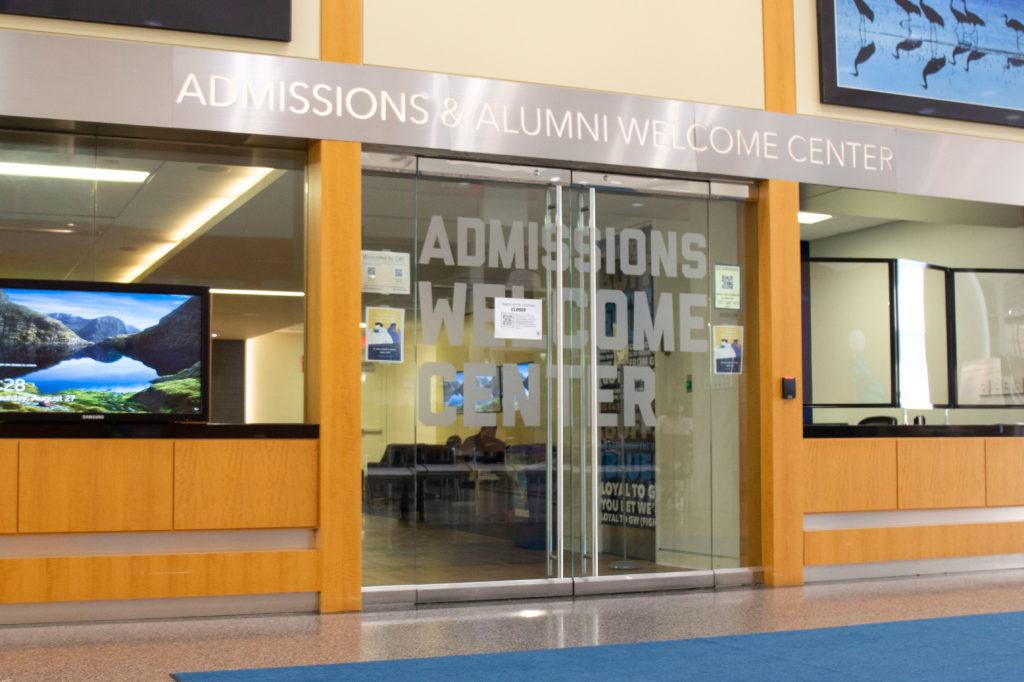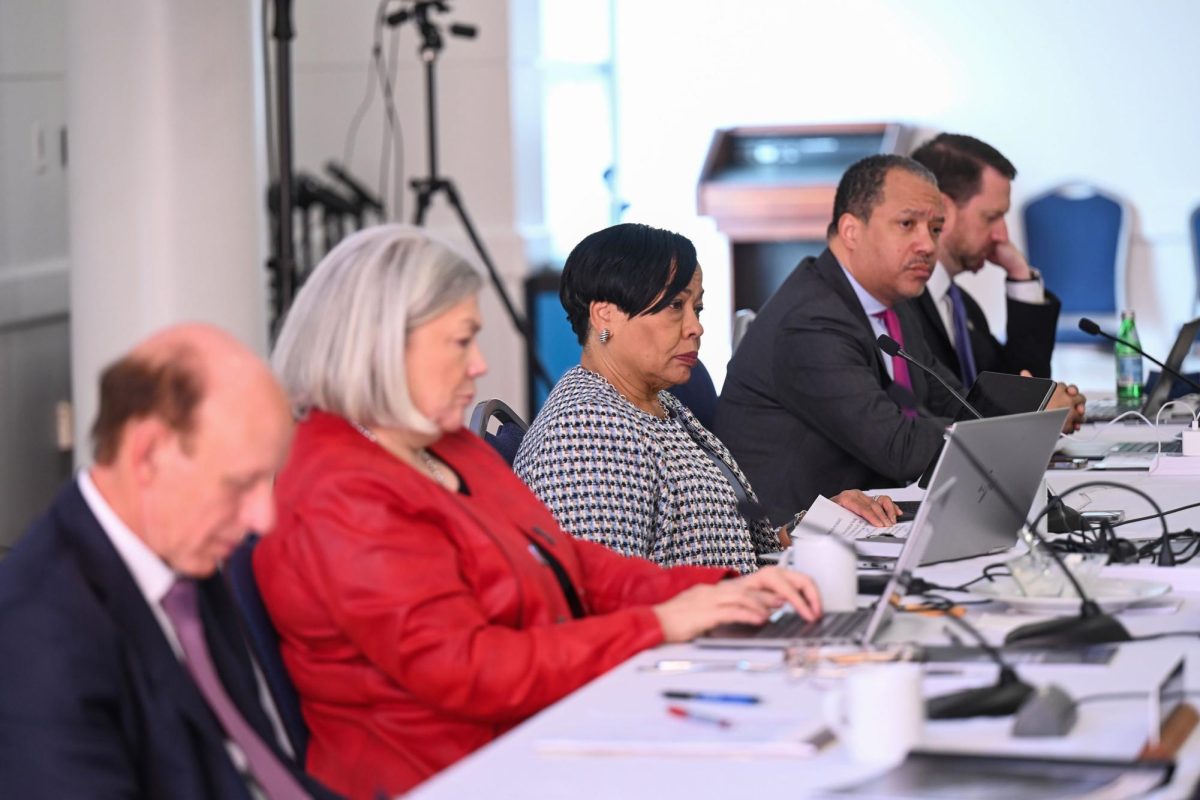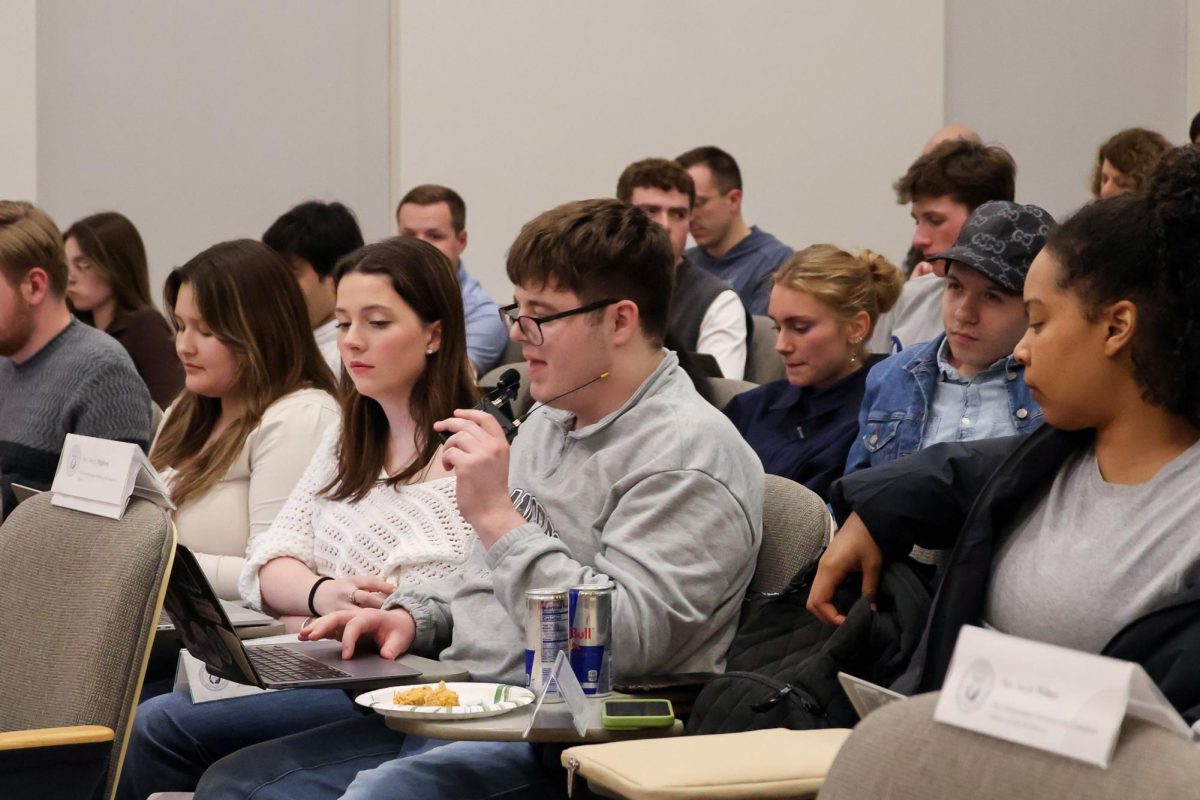Experts in higher education said GW’s recent six-percentage point acceptance rate hike could affect how potential applicants see GW’s academic prestige, as the college application season kicks into full gear.
Officials said GW’s acceptance rate rose from 43 percent during the 2020-21 academic year to 49 percent during the 2021-22 academic year because the University drew a larger pool of qualified applicants. Experts in higher education administration said the higher acceptance rate could damage the incoming class’ view of GW’s academic standing as prospective students warm up for the college application season in the coming months.
Provost Chris Bracey said at a Faculty Senate meeting in April that GW’s acceptance rate has risen similar to those of other U.S. higher education institutions over the past year.
He said officials have been hesitant to accept “higher-caliber applicants” in the past, fearing they wouldn’t matriculate to GW if accepted. Bracey said officials reversed the former principle and have started to accept more of these applicants, which has increased GW’s acceptance rate as more students matriculate.
“The change in admitting those students improved our student profile and quality index as some of them actually did yield – it also increased our persistence rates and graduation and retention,” Bracey said at the senate meeting in April. “But these improvements came at a cost of a higher admission rate and lower yield rate, and that’s what this data shows.”
Officials said the University received a record breaking more than 27,000 applications for the Fall 2022 semester.
Jay Goff, the vice provost for enrollment and success, and Ben Toll, the dean for undergraduate admissions, said the six percent admissions rate hike didn’t affect the size or quality of last year’s pool of applicants.
“The higher acceptance rate appears to have had no impact on our recent applicant pools and has assisted with growing the quality and diversity of the new student classes,” they said in an email earlier last month. “We believe the stronger class profiles can assist the University in continuing to attract a large and very competitive applicant pool.”
GW currently has an admission rate that is higher than 10 of its 12 peer institutions. Syracuse University and the University of Pittsburgh are the only schools with higher acceptance rates at 59 and 67 percent, respectively, according to federal data.
Goff and Toll said the University’s acceptance rate doesn’t accurately reflect GW’s academic prestige or quality because accepting more students doesn’t mean new students are less qualified to attend GW. They said GW needs to compete with institutions around the country, meaning they accept larger groups of applicants from states farther away from campus to ensure enough to attend in the fall.
“GW has traditionally attracted a very strong academic profile among its applicant pools,” they said. “We are fortunate in that GW historically receives more academically qualified applicants than we have available first-year seats in the new student class.”
Experts in higher education administration said GW’s six-point acceptance rate hike could negatively affect the number of highly qualified students who apply to GW, because it could make the school look less competitive, especially if the rate continues to climb.
John Zilvinskis , an associate professor in student affairs administration at the State University of New York at Binghamton, said the number of students who are accepted into an institution doesn’t necessarily reflect the qualifications of an application pool, but many college applicants still use the percentage to decide what colleges to apply to.
“Unfortunately, I think that consumers – students and families – are really uninformed when it comes to college selection,” he said. “So acceptance rates may enter their decision-making process, ‘Oh, look, this is selective, they don’t let everybody in, that must mean that there are academically talented students at least and you’d hoped that that mirrors a good learning environment,’ but that might not be the case.”
Zilvinskis said colleges and universities around the country are “worried” about falling numbers of college-age students and potential applicants. The number of college-age students will start declining by 2025 after birth rates dropped by about two percent during the 2008 recession, according to a 2020 report from the Western Interstate Commission for Higher Education.
“I think internationally, folks concerned about the trend of 18-year-olds will be coming up so that will certainly affect the acceptance rates unless a critical mass of institutions close,” Zilvinskis said.
Phil Trout, a Minnesota-based college admissions counselor and the former president of the National Association for College Admissions Counseling, said many colleges and universities like GW expanded their marketing and outreach efforts over the last year to make up for pandemic-related shortfalls in enrollment.
“For fall 2022, many colleges and universities were – my words here now – ‘hedging their bets,’ and making certain that they were going to be at least in a position to meet their enrollment goals,” he said. “And one way that that could play out is that they sent a larger percentage of students in the applicant pool an acceptance letter.”
Trout said the number of higher-quality college applicants graduating from high school has not increased in recent years, but there are more applicants in general than large colleges like GW saw five years ago.
“All colleges are businesses,” he said. “And all businesses want to see their place in the marketplace be enhanced.”
Ron Lieber – the author of The New York Times “Your Money” column, focusing on higher education policy and finance – said while many applicants consider acceptance rates when deciding on what institutions to apply to, campus location and the prestige of academic programs are more relevant to swaying applicants.
“I hope the VP of enrollment is not being graded on whether the number is 43 or 37 or 49,” he said. “I think families who make decisions on the basis of stuff like that are doing it wrong, and hopefully, the school doesn’t want to attract the kinds of families who do it wrong.”
Lieber said a lower acceptance rate can help an institution rise in national college and university rankings, but may not be indicative of overall academic quality. U.S. News uses acceptance rates and student selectivity as seven percent of its formula to determine its ranking list, while Forbes does not use overall acceptance rates to determine its rankings.
GW rose 10 spots on Forbes’s annual national college ranking list to No. 61 and one spot in U.S. News and World Report’s rankings to No. 62 last month.
“Maybe it affects the U.S. News ranking, and maybe it doesn’t, but also, maybe GW doesn’t want to attract that kind of student who cares about rankings, because it’s sort of a silly way to make your decision about where to spend four years of your life,” he said.
Dana Sultan and Ianne Salvosa contributed to reporting.








